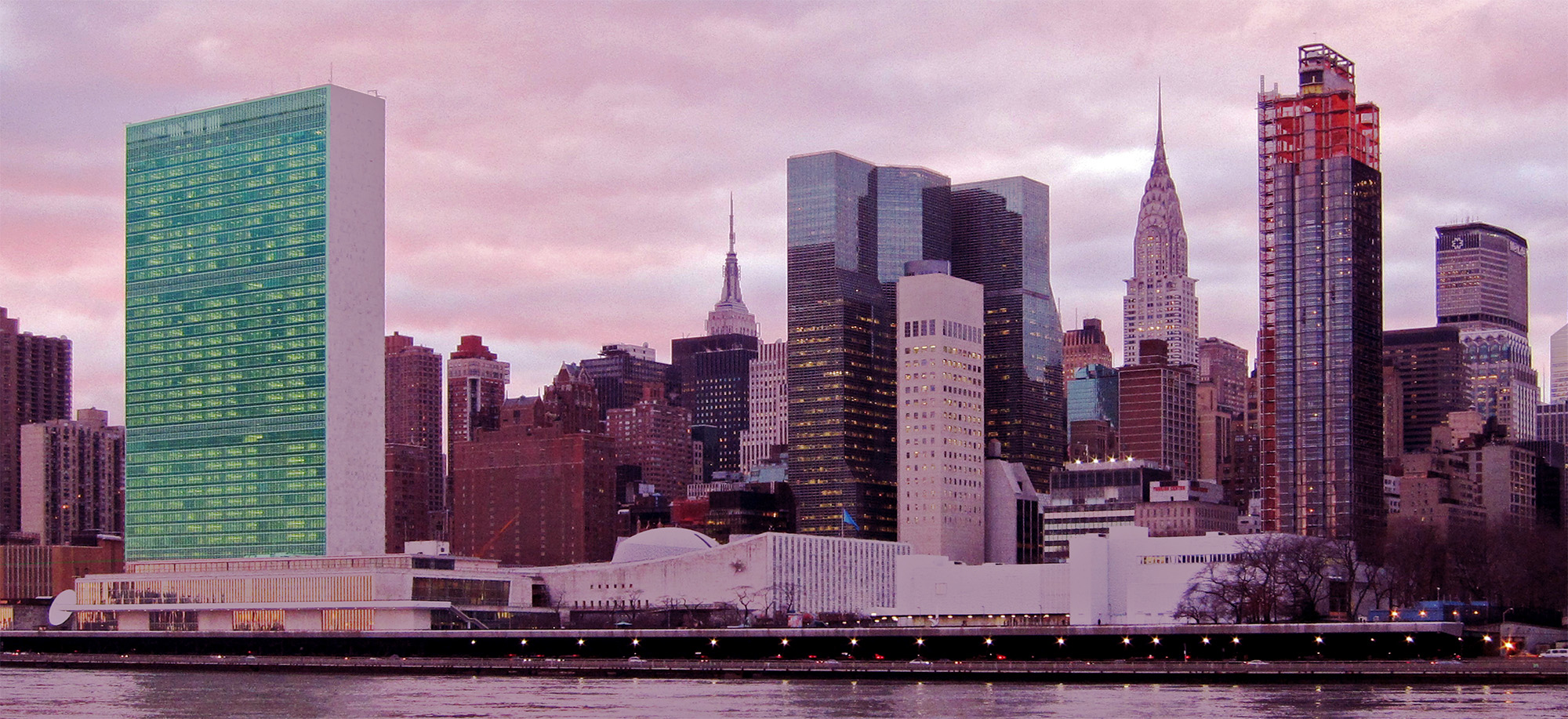Kimberley Process must grasp historic opportunity to correct its limitations,
WDC President to tell special UN General Assembly meeting in New York
WDC President to tell special UN General Assembly meeting in New York

FEBRUARY 28, 2019
ABOVE: United Nations headquarters in New York, location of the 73th Session of the UN General Assembly, which on February 28, 2019, will host the special meeting on ‘From blood diamonds to peace diamonds: conflict prevention through the Kimberley Process.’ (Photo courtesy of Wikimedia Commons)
With 2019 being the final year of the Kimberley Process’ three-year review, the organization must grasp an historic opportunity to correct shortfalls in the system designed to prevent conflict diamonds from entering the chain of distribution, World Diamond Council President Stephane Fischler will tell a special meeting on the role of diamonds in fueling conflict, which is being conducted today in New York as part the United Nations General Assembly’s 73rd Session.
Mr. Fischler will speak on behalf of the diamond and jewelry industries in the session entitled “From blood diamonds to peace diamonds: conflict prevention through the Kimberley Process,” and specifically address the topic of the KP as both a conflict prevention tool and a facilitator of sustainable development, good governance and transparency. The session is being hosted by the European Union and will be attended by both the 2019 Chair of the Kimberley Process, Alok Chaturvedi of India, and the 2018 KP Chair, Hilde Hardeman of the European Commission, as well as by representatives of government, industry, civil society and academia.
In his address to the gathering Mr. Fischler will note that, while the UN-mandated Kimberley Process Certification Scheme, which was launched in 2003, has proven itself successful in stemming the flow of diamonds that were financing rebel forces in civil wars, it has not been successful in addressing other types of mineral-related conflict, and in particular systemic violence in the mining areas. Since much of the latter has occurred in places where small-scale and artisanal mining is conducted, the KP has not met its potential as a facilitator of capacity building and sustainable economic development, Mr. Fischler will say.
However, by adopting a number of urgently-required reforms at the conclusion of its current review process, the KP has the capacity to correct its limitations, the WDC President will stress. These include improving the KP standards and modalities, such as the peer review mechanism; raising the level of representation and participation in the body, both by governments and the United Nations; improving the gathering and flow of essential data; and creating a permanent secretariat, which will be staffed by full-time professionals.
Critically, Mr. Fischler will stress, the Kimberley Process must galvanize its absolute commitment to its conflict-prevention mission, and this he said will require the expansion of the definition of “conflict diamonds” to cover all forms of systemic violence, including those carried out by state and private security forces. A proposal to this effect was put forward by the Government of Canada at last November’s KP Plenary Meeting in Brussels, and was supported by both the industry and civil society participants in the tripartite forum. The WDC President will call on the KP to achieve consensus on the issue before the end of the year.
While it waits for action from the Kimberley Process, Mr. Fischler will tell the gathering, the World Diamond Council is already conducting reforms of its own, to enable at the industry-level the type of progress it is advocating for the KP. These include a revised System of Warranties, tracking both rough and polished diamonds all the way to the jewelry retailer, which now expressly reference human rights and strict labor practices, and also support the OECD Due Diligence Guidelines for Minerals from High-Risk Areas.





